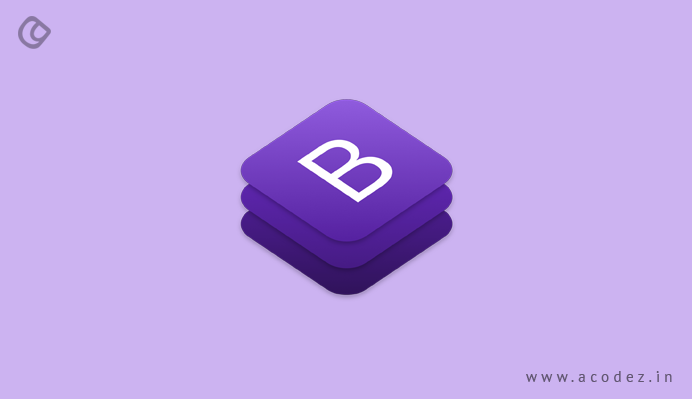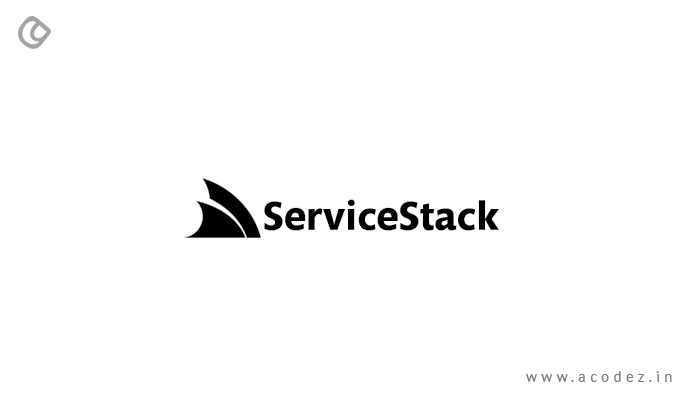We decided to discuss one of the most popular web application development frameworks from Microsoft. Based on the latest trends, market and industry development, and customer expectations, every now and then, newer and extended feature are updated to this framework, making it easier for developers to deploy robust, scalable web applications that exhibit high-level performance.
When ASP.NET is combined with application monitoring and profiler (performance tool), you get apps that are cutting-edge and splendid when it comes to performance and innovation.
Best Front-End Frameworks
In this article, we will take you through some of the best back-end and front-end .NET frameworks that you need to be aware of. Firstly, let us take a look at some of the best front-end frameworks.
1.Sass
Syntactically Awesome Style Sheets (Sass) comes as an extension of Cascade Style Sheets (CSS). CSS, as you are aware, offers us with a large number of interesting features and functionalities that make the project development process much easier. Some of the core features of Sass include nesting, looping, the liberty to use variables and mixins within the code. These are the features that make it easier to keep a clean and neat code, making the coding part much easier than ever before. This Sass or SCSS code is then collated into the standard CSS as browsers cannot interpret Sass or SCSS. Check out Compass, a framework from Sass, which makes it easier to get rid of the heavy coding part as it comes with a number of mixins that can be reused.
You can download the source code here.
2.Bower

If you want to speed up your development workflow, then use Bower front-end package management tool. It is simple and easy to use and understand. All you have to do is install the package and the corresponding dependencies within your project using the command line – $ bower install jQuery.
There is no hectic process of searching for the latest version, copying it or anything else to be done. Just copy the above command line within your project and you are all set to go.
3.Jasmine
Would you like to test your JavaScript code? Then Jasmine is the perfect front-end .NET framework for it. It offers an easily understandable syntax though it is very powerful. Write your unit tests using Jasmine and then execute these using Karma. One of the best examples of Jasmine is Jest from Facebook, which also adds a new level to Jasmine’s set of features.
You can download the source link here.
4.Karma
Karma framework is an agnostic test runner. Initially, known as Testacular, which allows you to write your unit tests (like Jasmine) along with your application code and allows to simultaneously test your code while it is being developed. When using Karma, you can test your code within real browsers on real devices or on Phantom JS.
You can download the source code here.
5.Bootstrap

Do we need to say more? You very well know why Bootstrap is on our list. Initially, developed by a designer at Twitter, Bootstrap is one of the most popular front-end frameworks that comes with a lot of reusable, robust and attractive styles, which can be implemented for your day-to-day styling needs. This grid system is responsive and mobile-first and offers a lot of basic typography styles, including styles for common elements which comprise buttons, form inputs, and others. You can even implement Bootstrap for rapid prototyping.
You can find the source code here.
6.AngularJS
AngularJS is an open-source model-view-controller JavaScript framework that has been created by Google. This allows you to extend HTML’s capabilities for creating testable and strong web applications. It offers a two-way declarative data-binding capability for simplifying complex app development and the DOM manipulation is mostly handled by the framework. It has extensive documentation and active community support on Stack Overflow.
You can download it here.
7.Grunt
Similar to Bower, you can use Grunt as a developer tool and can be run from the command-line. Automation is the specialty of Grunt as it allows minification, compiling of Sass, launching node server, documentation creation, code linting, compressing images and unit testing. Grunt comes with a wide range of plugins, which makes all your tasks easier.
You can download it here.
8.Yeoman

With Yeoman, you would find that using Bower and Grunt is further easier. You can support a project using a Generator very easily using Yeoman. There are pre-installed elements within Generator, such as libraries and frameworks, along with Grunt tasks and Bower dependencies which make project development easier to kick-off. You can use different generators for different projects.
You can download the source code here.
The above mentioned are some of the best front-end frameworks from .NET.
Best Back-End Frameworks
Now, let us take a look at the best of back-end frameworks from .NET.
1.ASP.NET WEBAPI
If you are an expert at ASP.NET MVC, you need not to spend time on some other complex frameworks but ASP.NET WEBAPI is the best one for you. It works on the same lines as MVC – though it doesn’t have System. Web dependency. This framework is entirely separated from MVC and all you have to do is duplicate the same code on MVC and Web API as the same interface or class has a different namespace.
You can download here.
2.ASP.NET MVC
This comes with the MVC model implemented and usually can be used if you are looking for receiving huge traffic.
You can download the source code here.
3.Sharp Tests Ex
Using a fluent syntax, you can use this library to encompass all testing frameworks. When you are trying to copy any part of your code to an app using NUnit or MS-Test, you can change the testing attribute within the test class.
You can download the source code here.
4.Servicestack

Servicestack comes with an interesting set of frameworks, which contain a JSON serializer, Redis client, Service clients, and ORM. You can use this set of frameworks for ensuring a great performance for your app.
You can download the source code here.
5.Autofixture
Using a non-relevant test fixture setup, this framework allows developers to test drive development. A few of the interesting features about Autofixture includes Automock and AutoMoqData, which would help developers.
You can download the code here.
6.CacheCow
If your app needs to respond to a number of requests, then caching is an important part of the process. If request and response are the same for almost all the requests, the performance can be improvised by reducing the number of operations. It provides an easy way to cache HTTP requests coming from both the client and the server using WEB API. Using a few lines of code, a great caching can be ensured for your services.
You can download the source code here.
7.Redis

Redis is an open source caching Framework offers advanced dictionary storage – you can also find it on Windows Azure. Since the performance of this framework is fast and available across distributed infrastructures, Redis is the best option for even multi-server apps.
You can download the source code here.
8.Quatrz.NET
Quatrz.NET is one of the best job scheduling systems for both small and large apps. Ported from a Java Project, it comes with a variety of ways to run a project from Cron pattern to a special calendar. This is one of the best options for scalable apps.
You can download the source code here.
9.Windsor Container
Windsor container is a dependency injector and would easily fit into your back-end framework needs as it is really fast, easy to use and offers a lot of extension points, such as interceptor, custom lifecycle, etc.
You can download the source code here.
10.Automapper

If you want to copy data from an entity to a DTO, then here you go. Automapper is one of the best options. It is easy to use, extensible and really fast.
You can download the source code here.
11.Common Logging
Common Logging is a library that you can deploy while you code your app or while you are logging into a specific framework. It comprises of a variety of logging implementations, such as Log4net, Enterprise Library, Nlog or anything you need. This is a porting of a Java Framework as discussed earlier.
You can download the source code here.
12.XUnit
One of the most active testing frameworks for .NET apps, XUnit is used with a number of frameworks that we had already discussed in this article. It supports Reshaper, Xamarin Test Runner, and CodeRush test runner
You can download the source code here.
13.Nancyfx

You can build HTTP-based services using the lightweight framework, Nancyfx. It takes a different approach when it comes to routing as it uses lambdas to recognize arguments and relative paths.
You can download it here.
14.Signalr
Signalr is one of the most popular back-end frameworks for developing real-time apps. this framework is built by the same team behind ASP.NET MVC/ Web API. It provides support for old browsers as well.
You can download the source code here.
Acodez is a renowned web design and web development company in India offering all kinds of web design and development solutions at affordable prices. We are also an SEO agency offering inbound marketing solutions to take your business to the next level. For further information, please contact us today.
Looking for a good team
for your next project?
Contact us and we'll give you a preliminary free consultation
on the web & mobile strategy that'd suit your needs best.














Thanks for sharing astonishing content with clarity and point to point. Best Front-End Frameworks list and also Back-End Frameworks list.